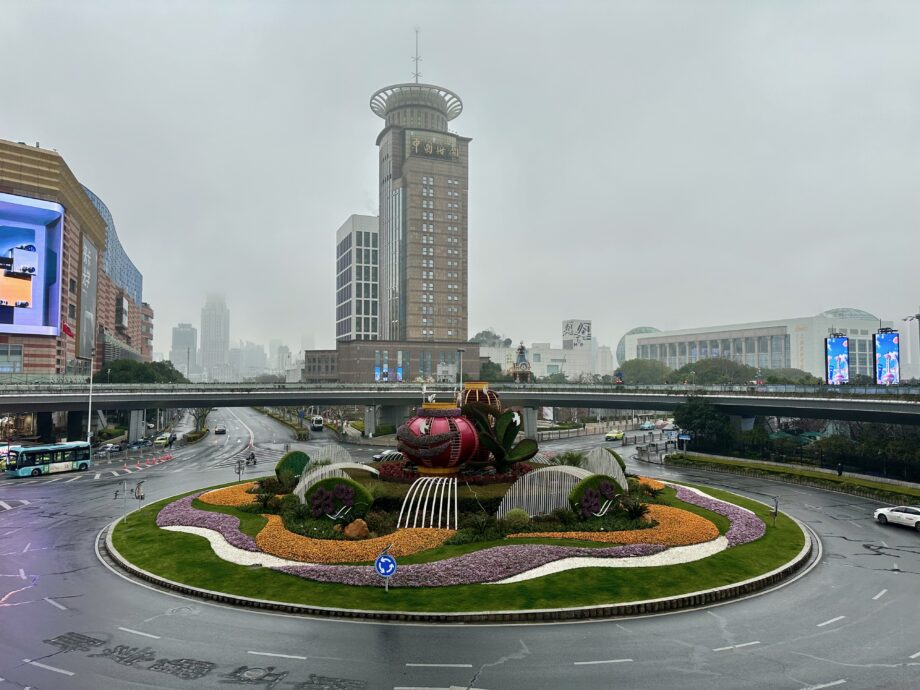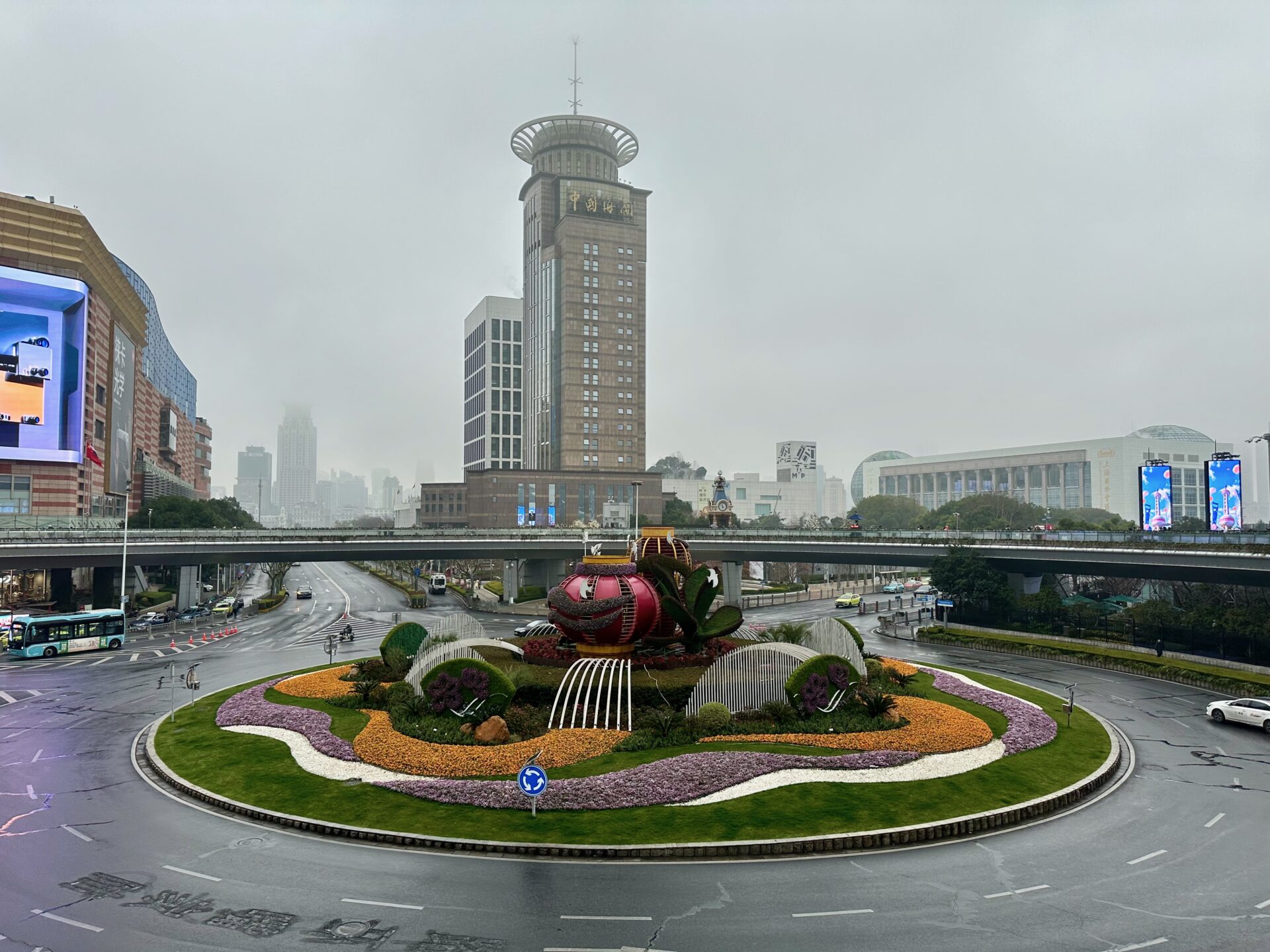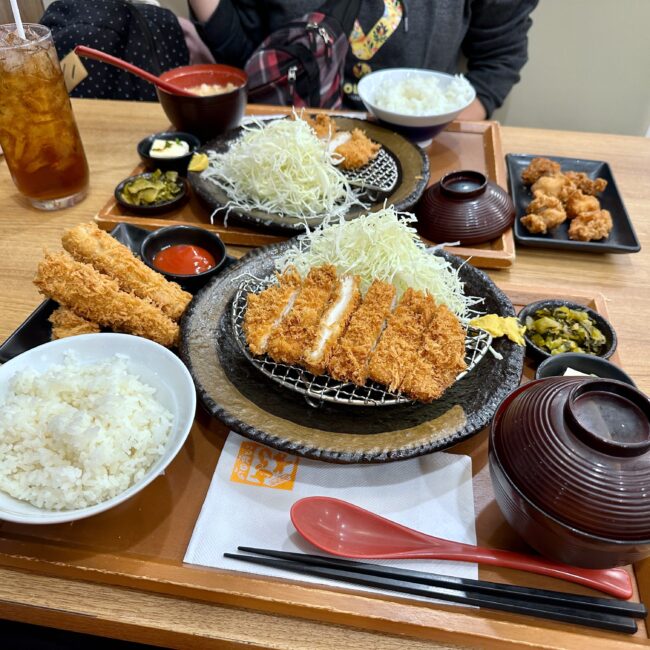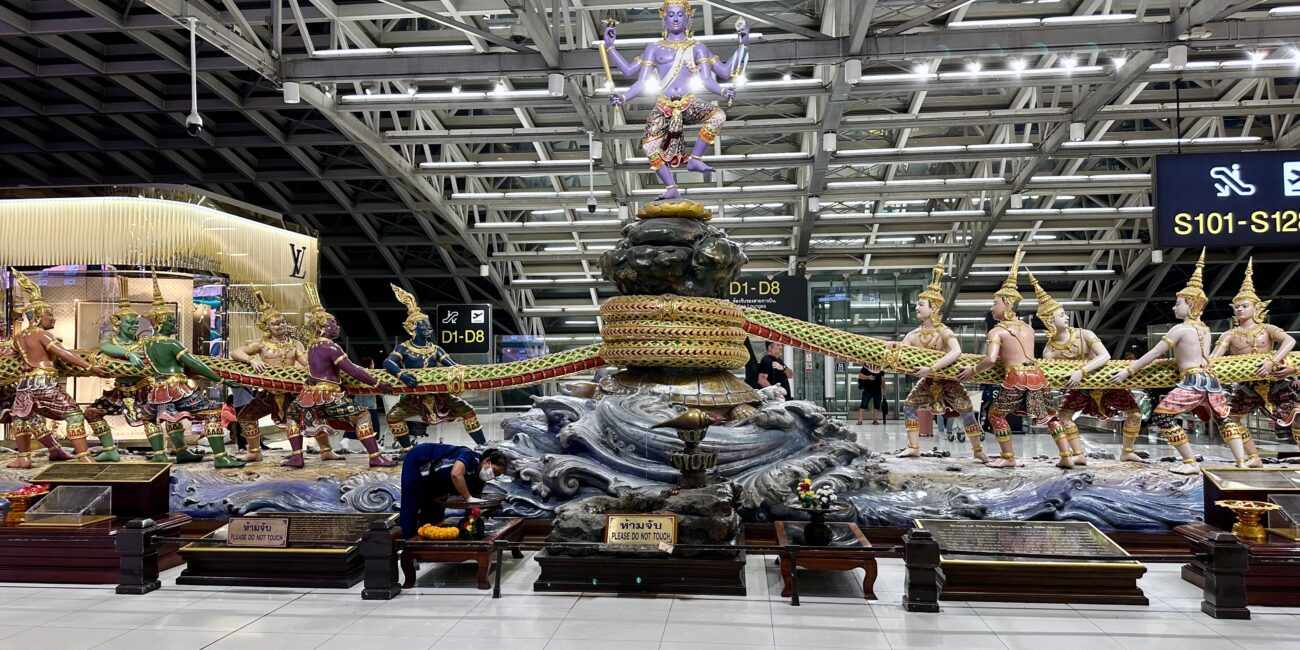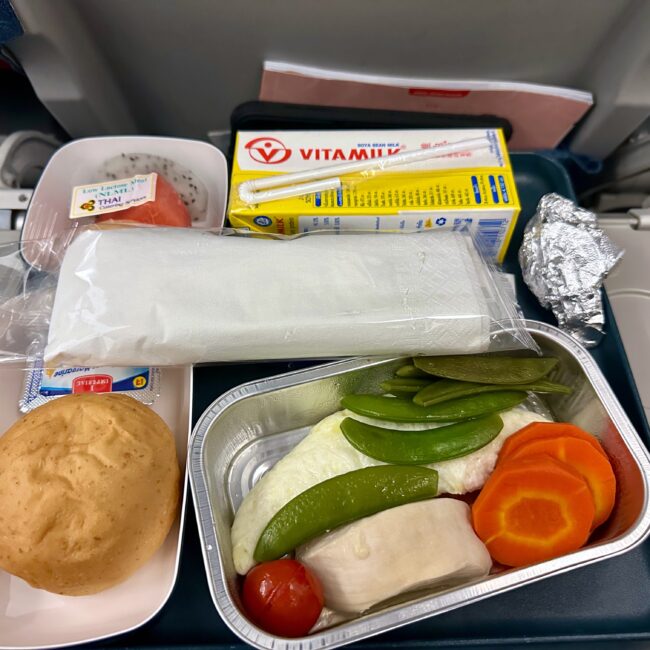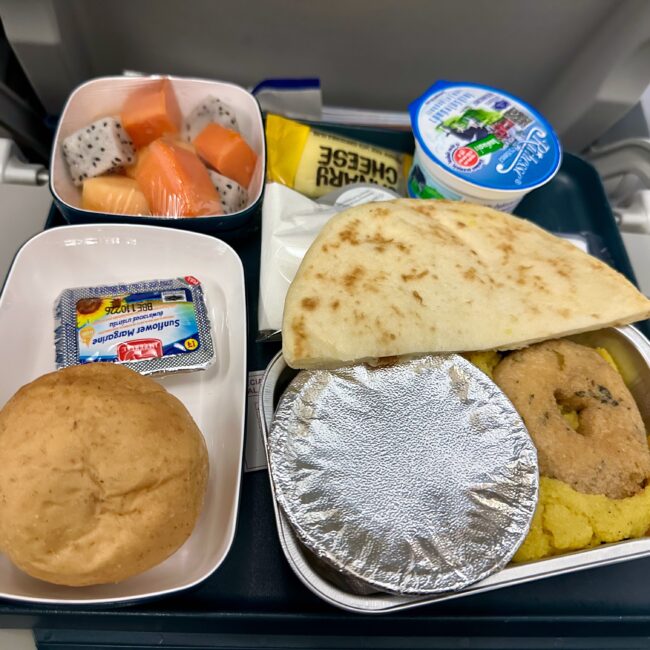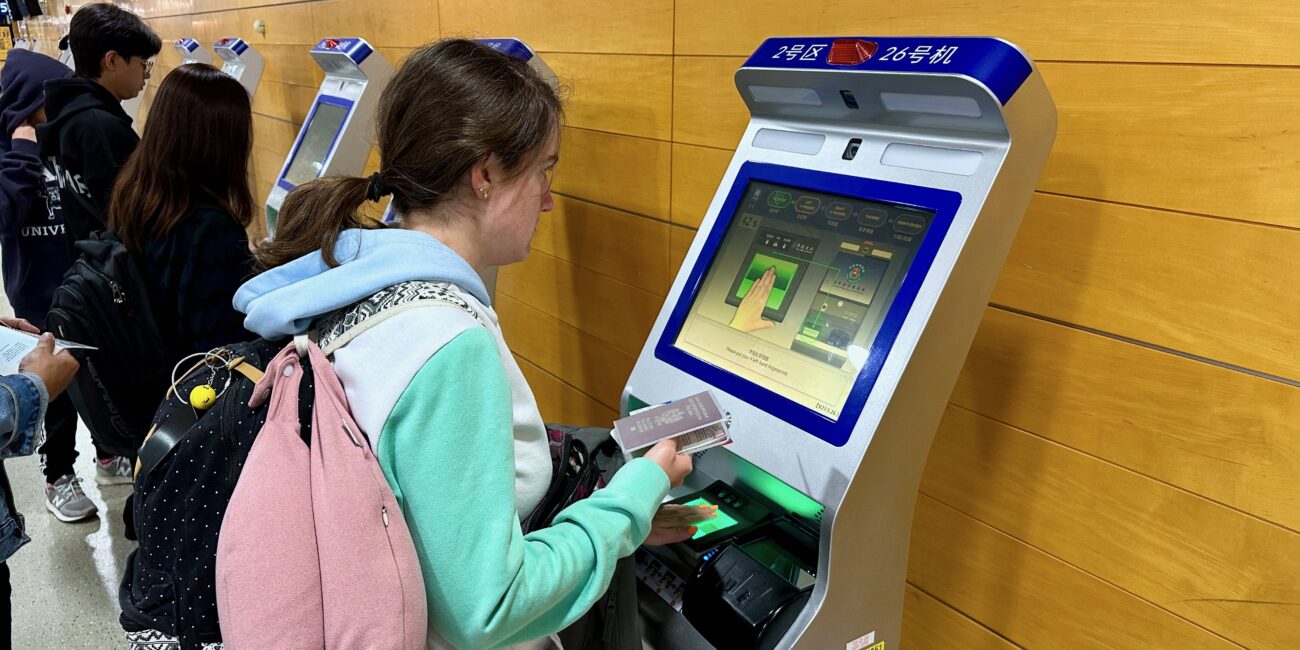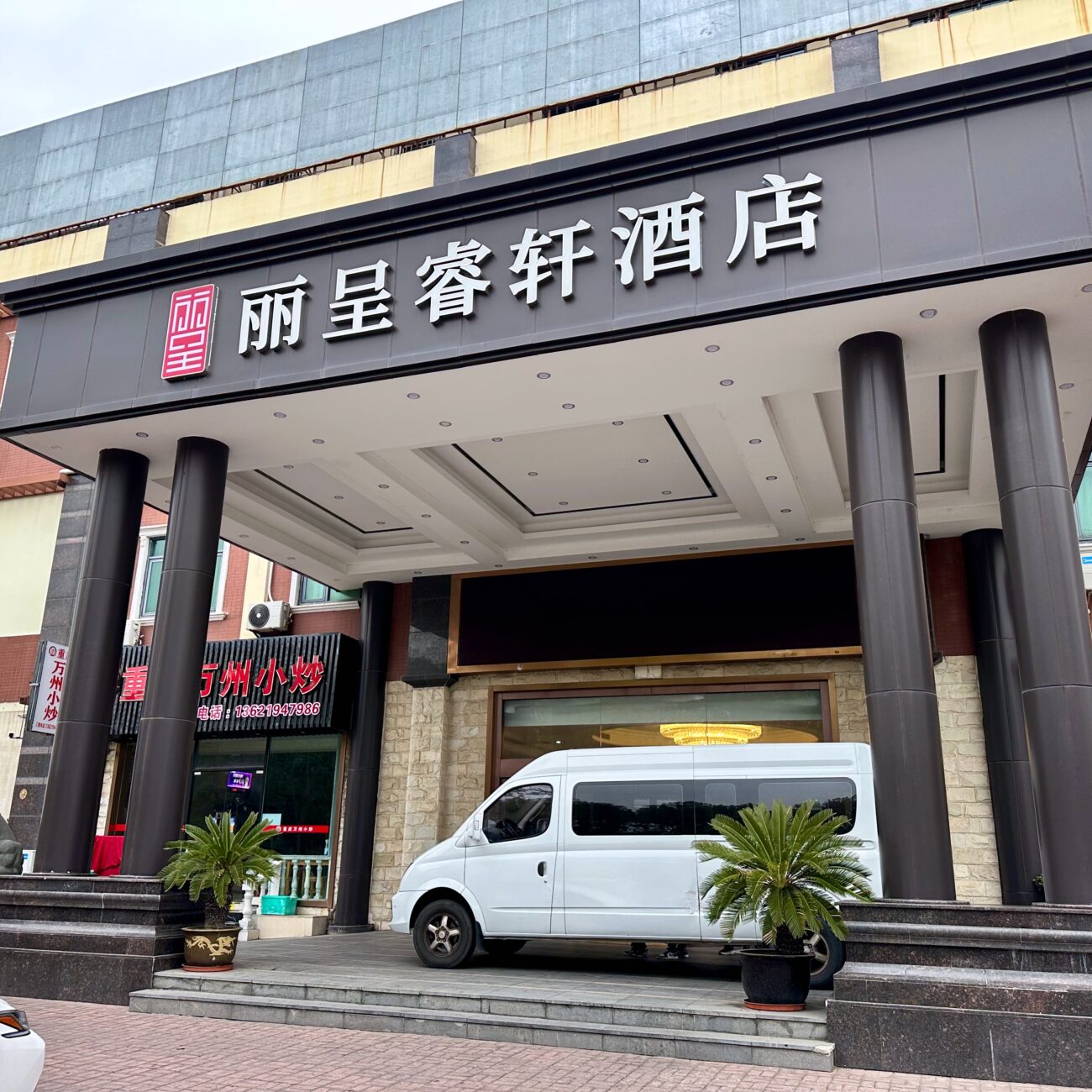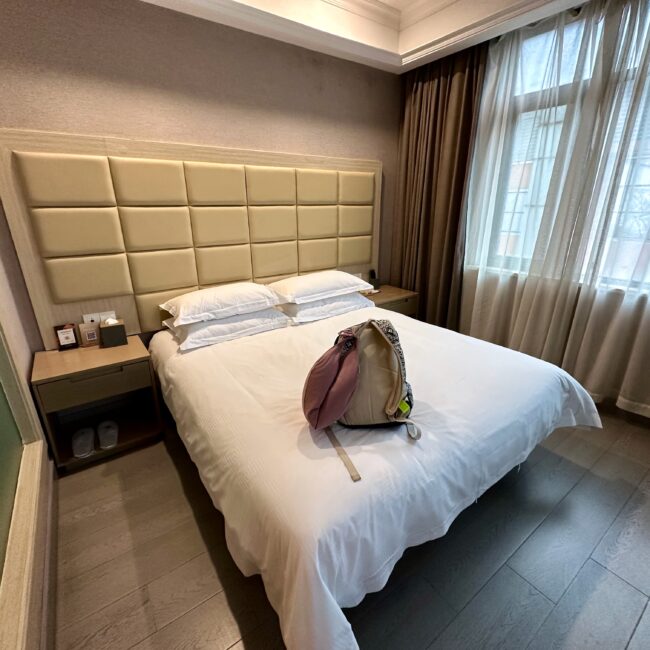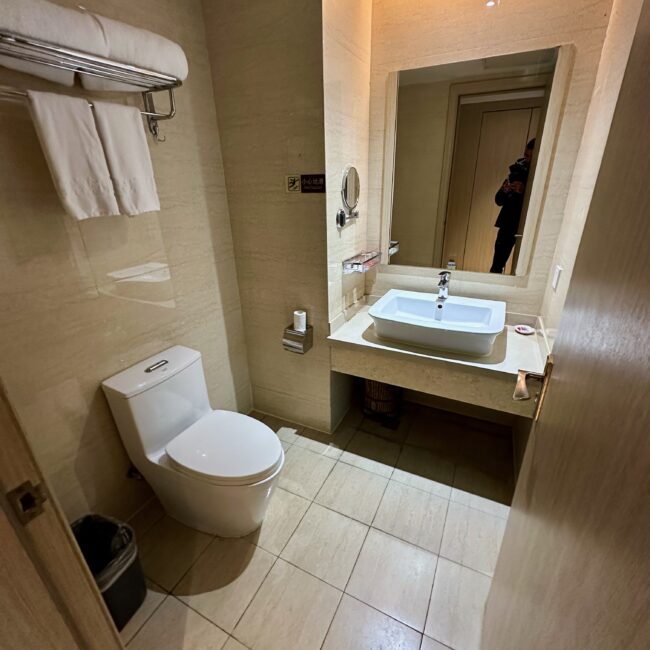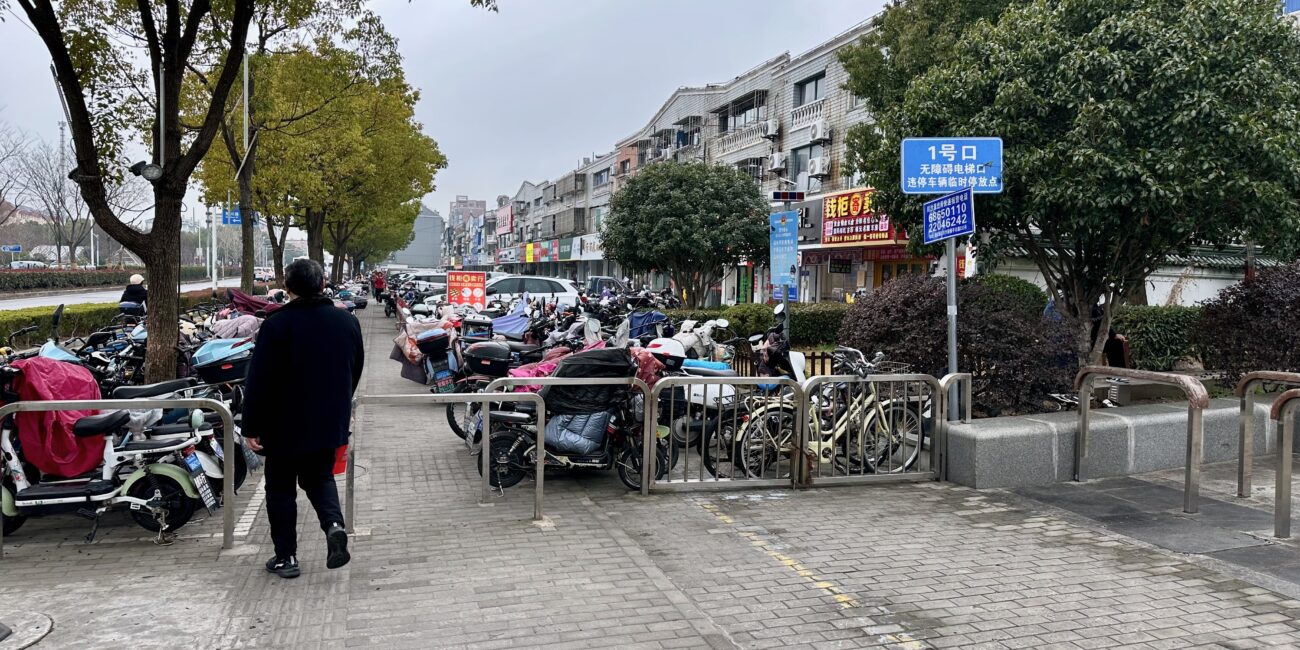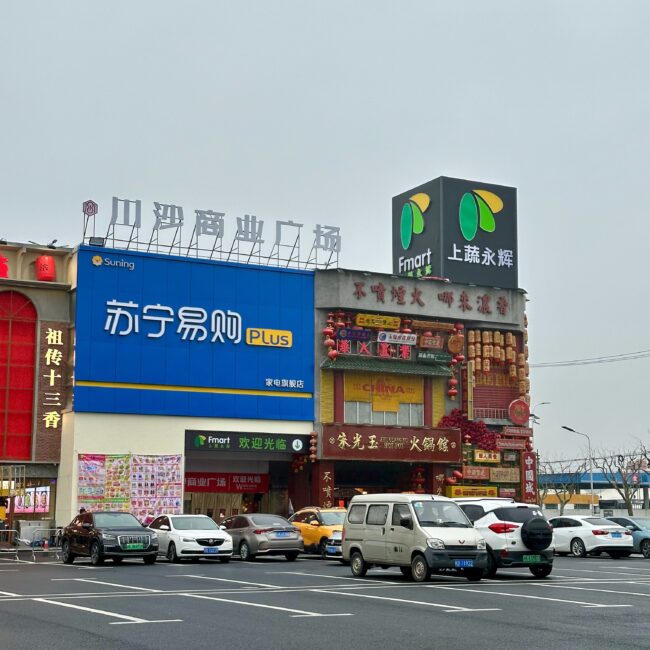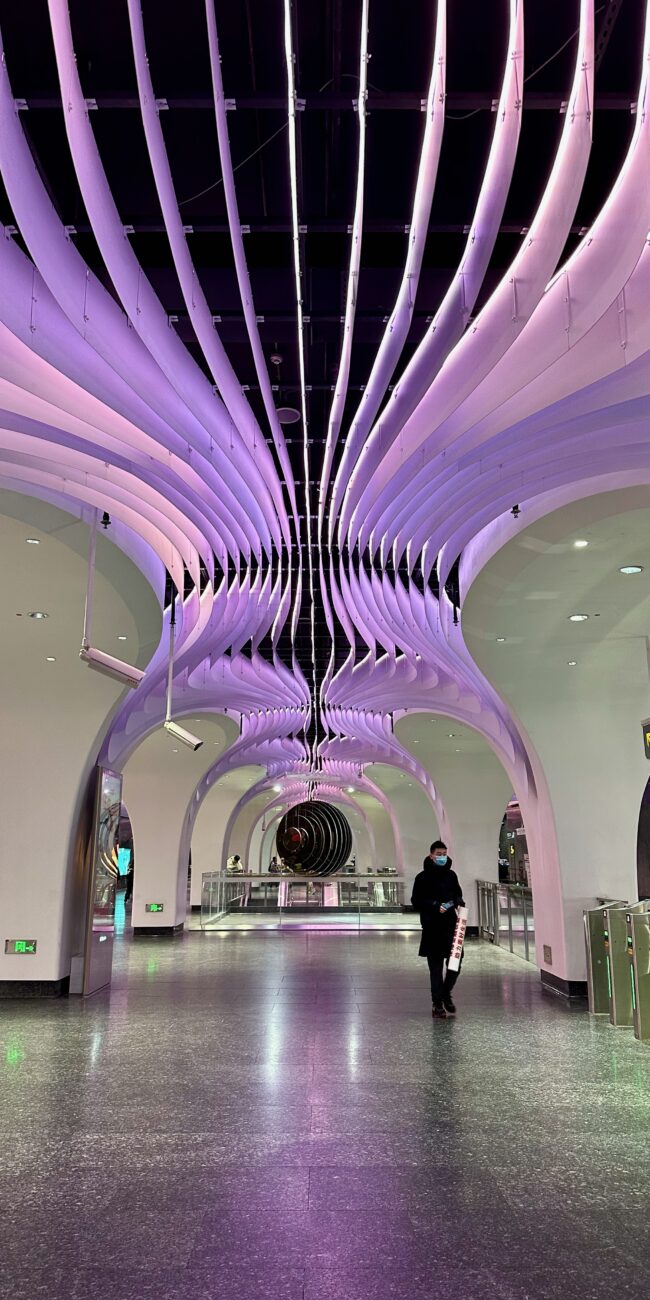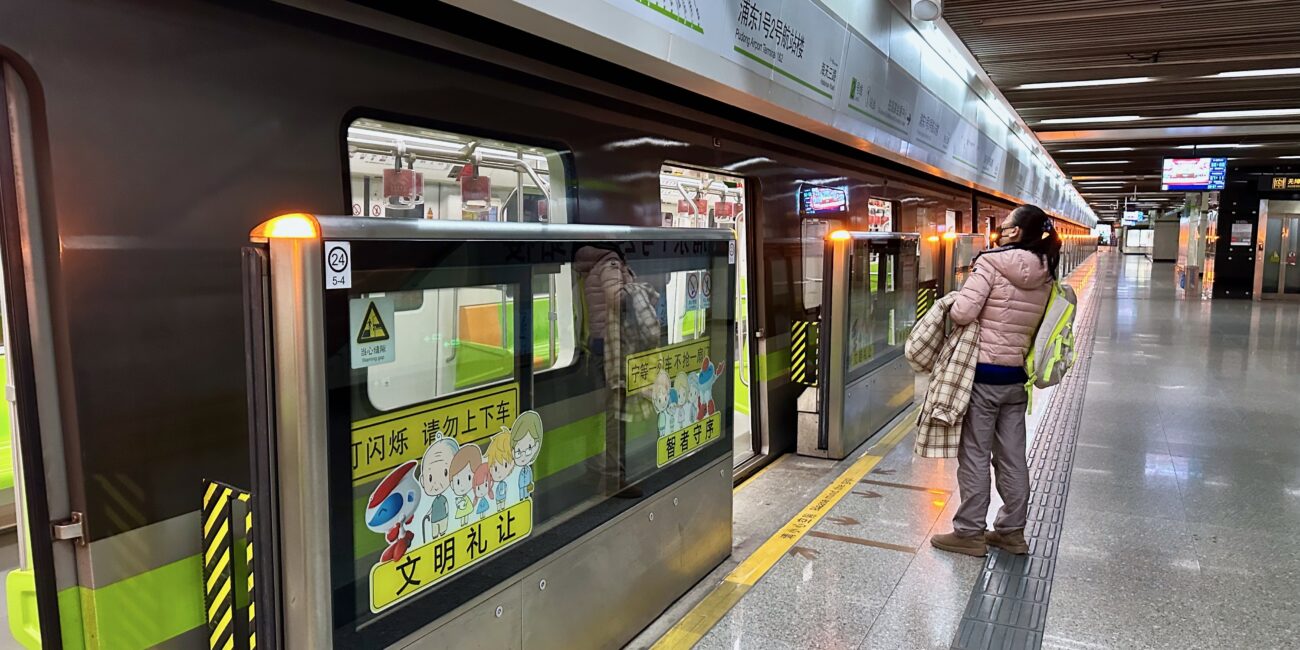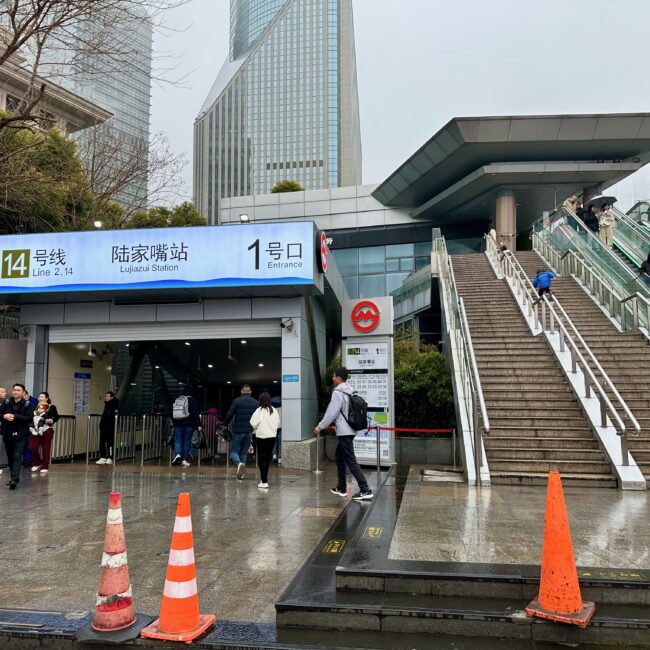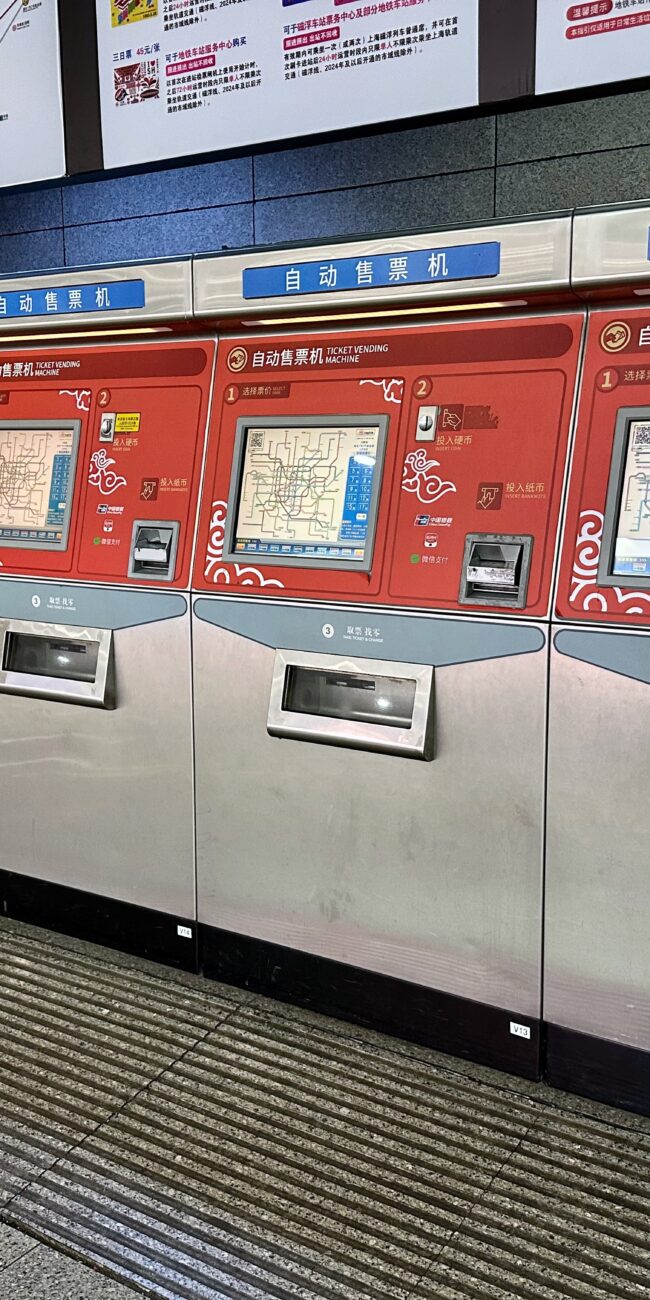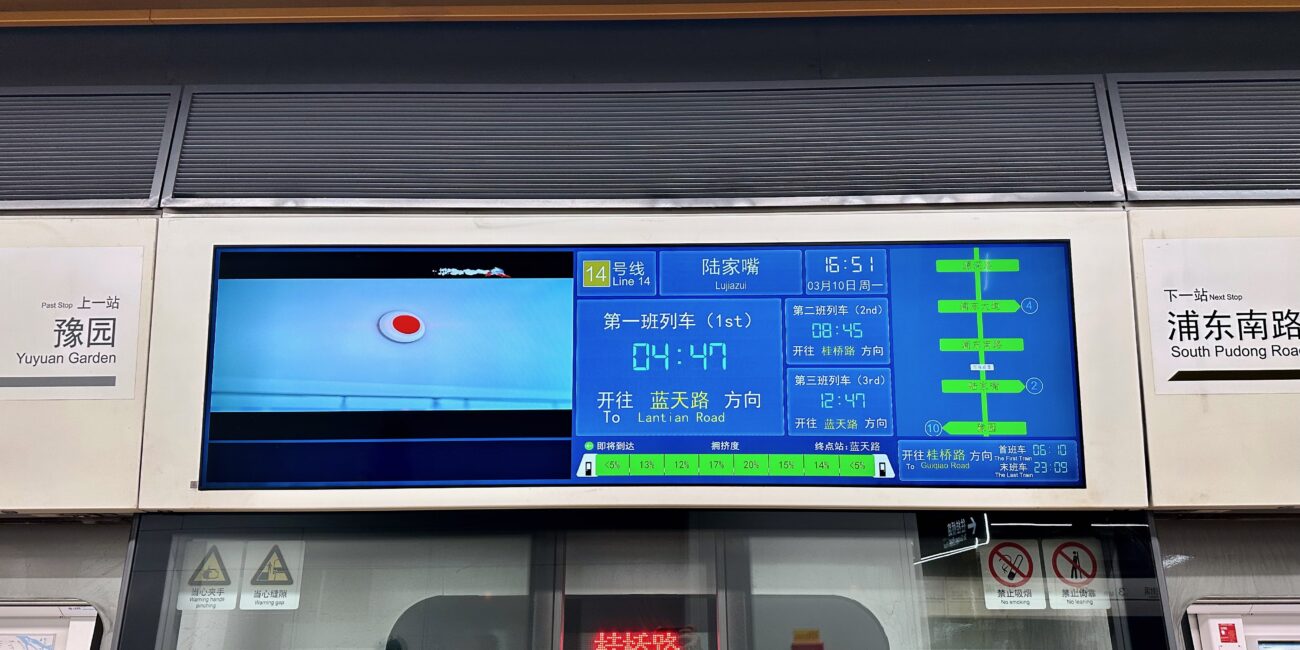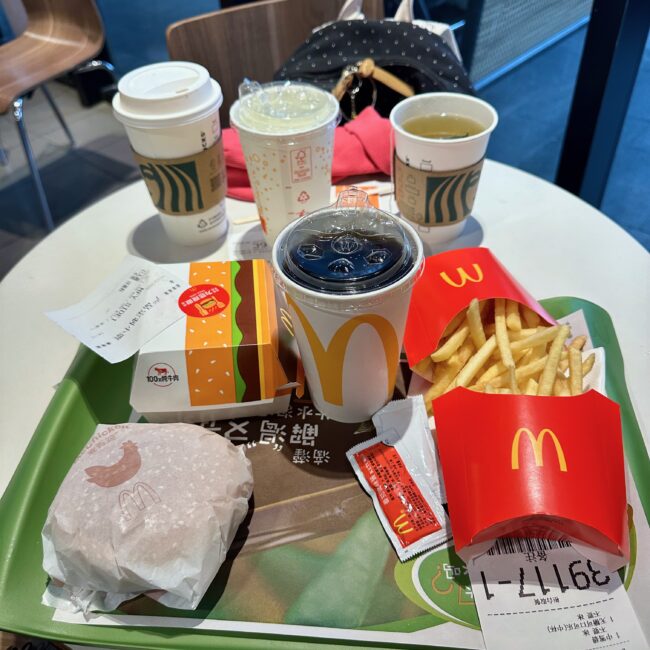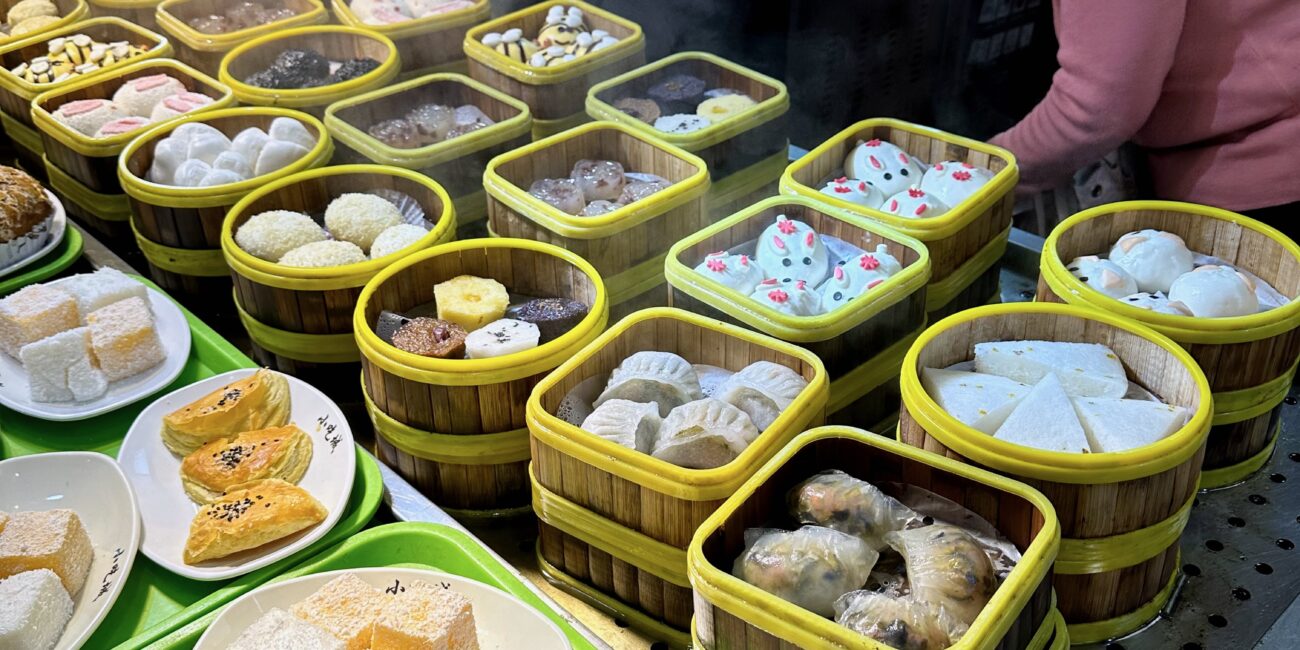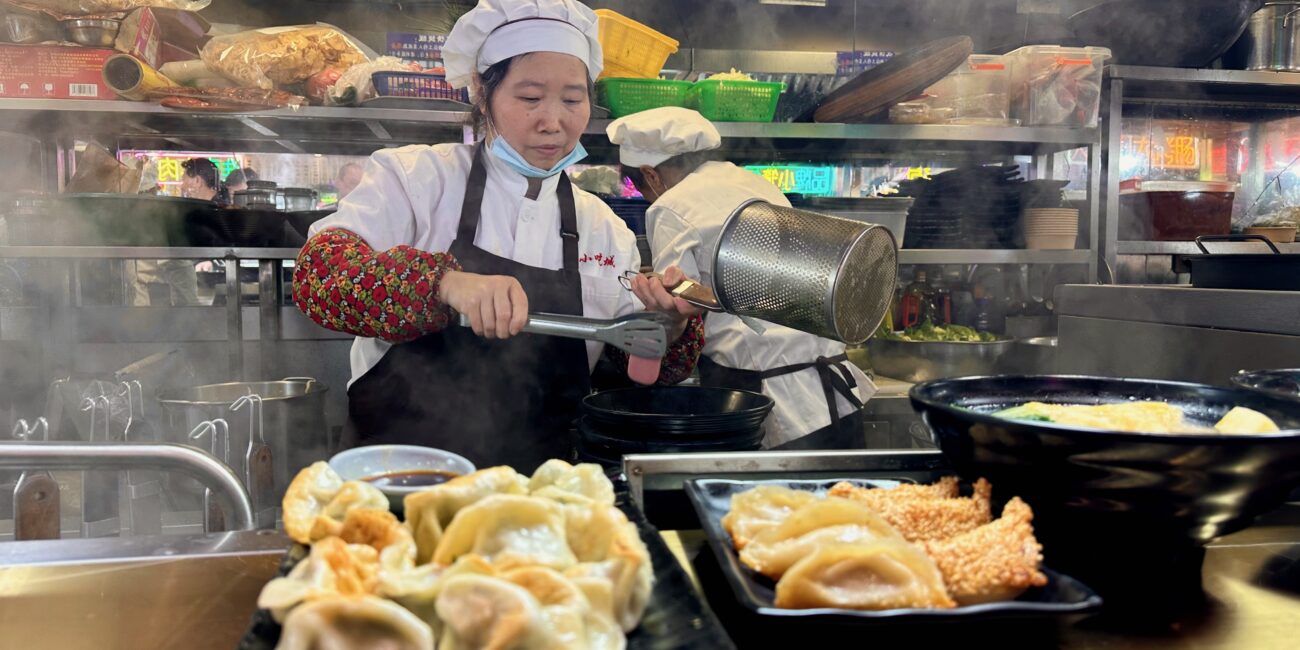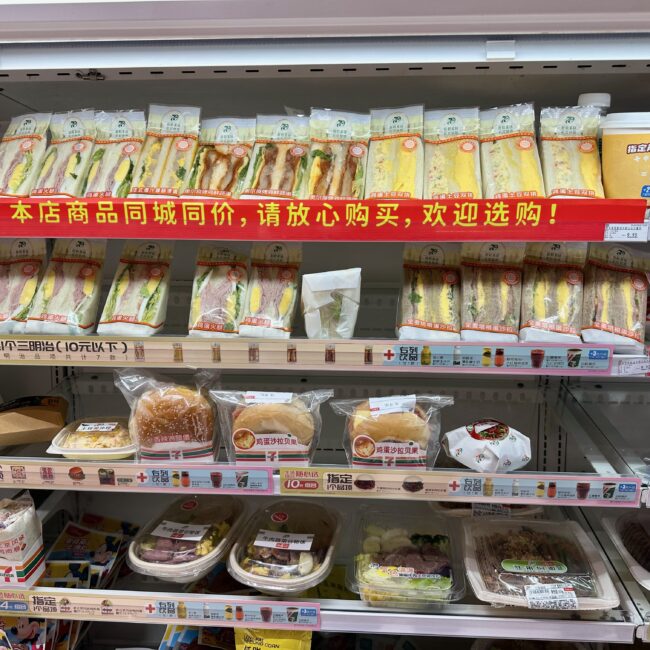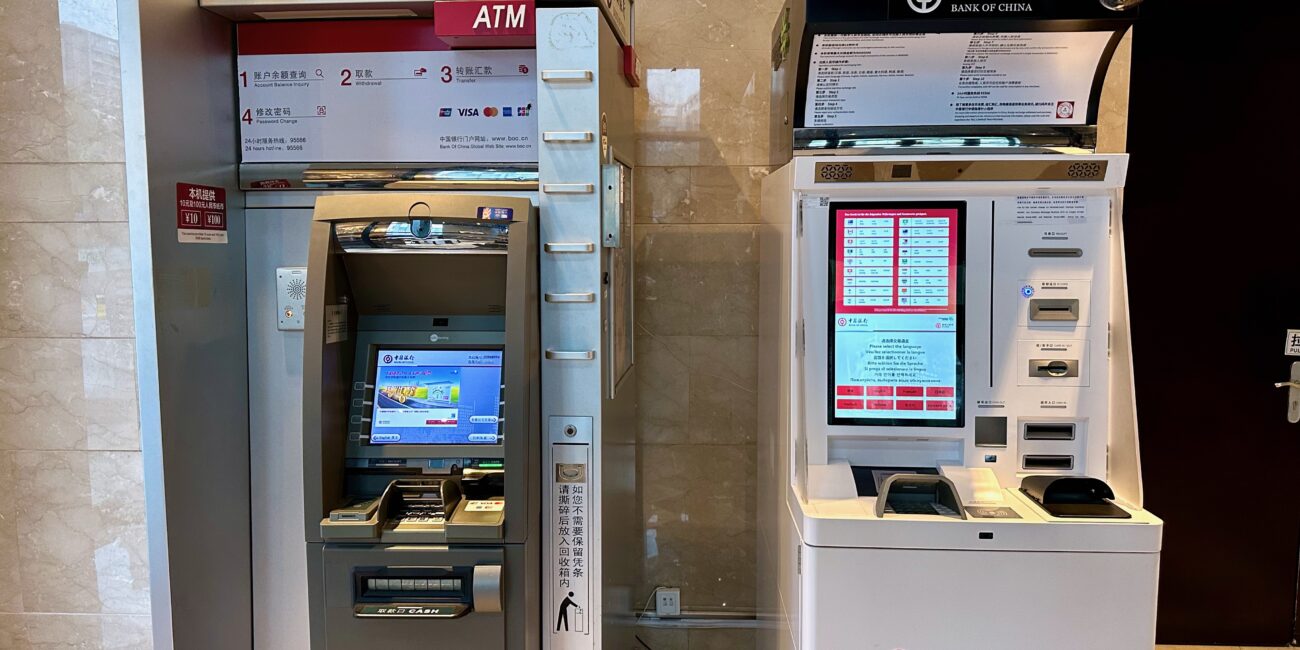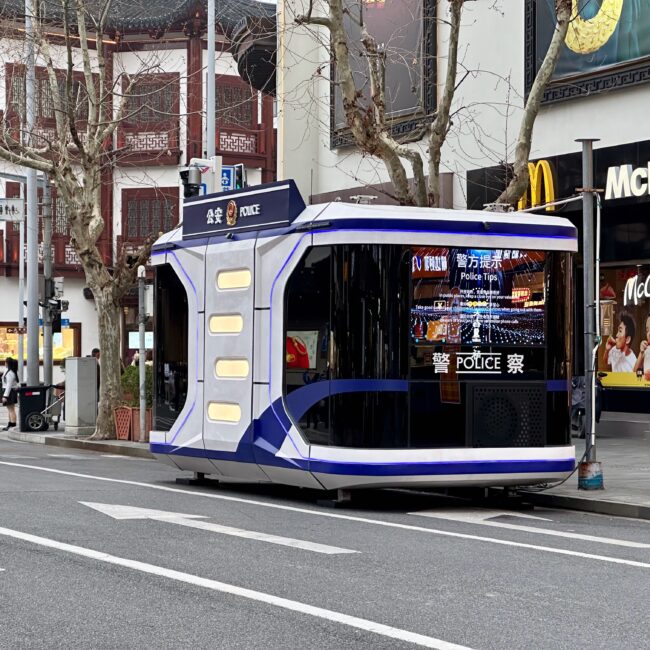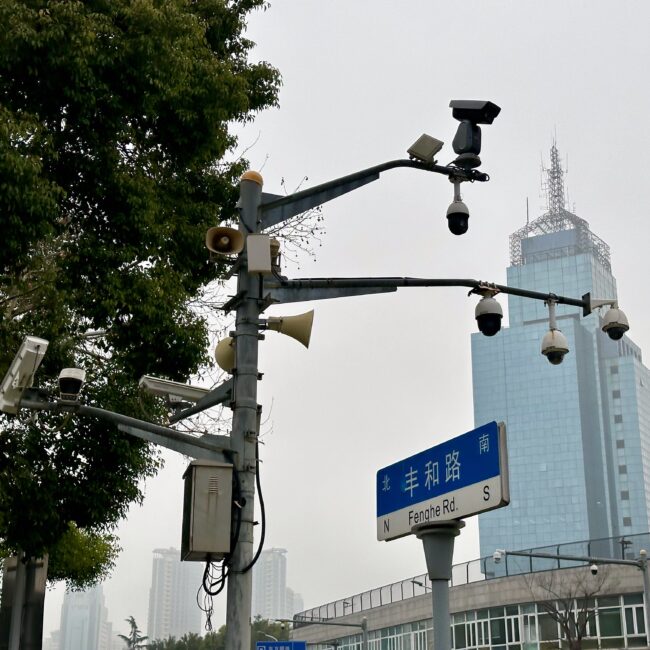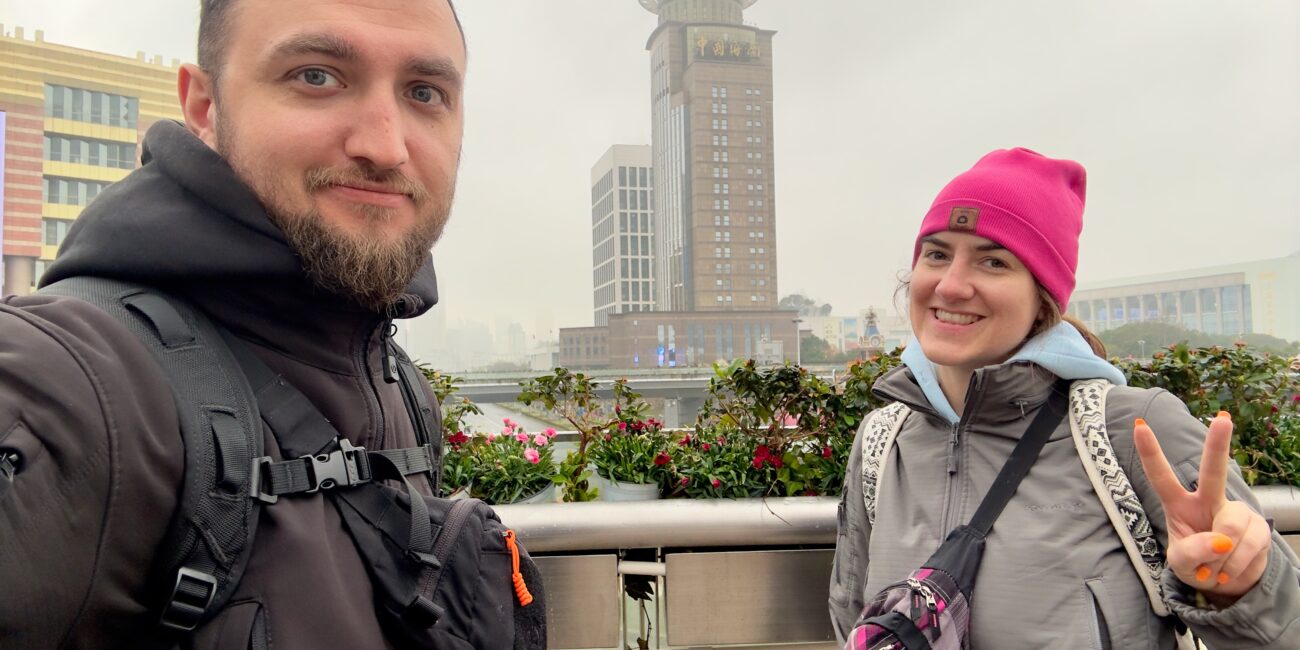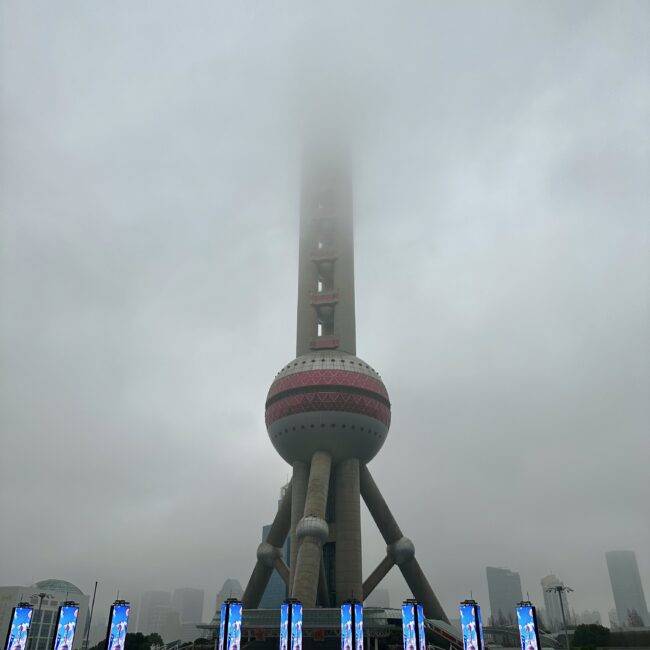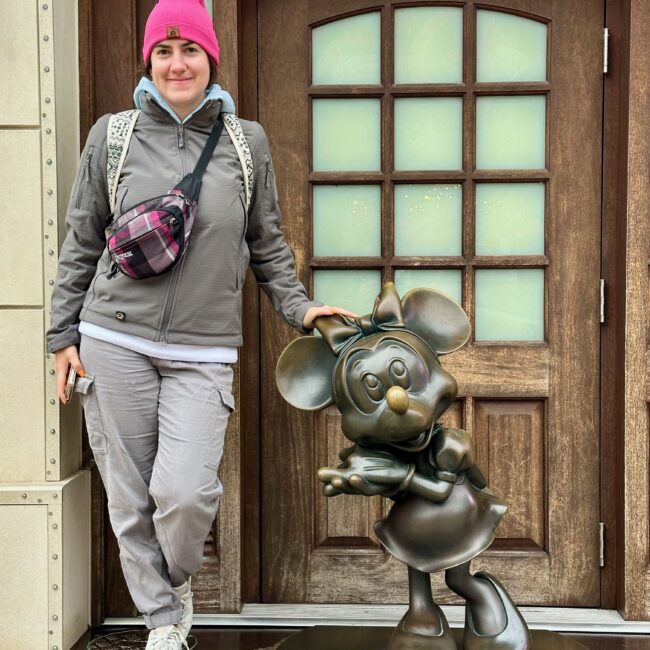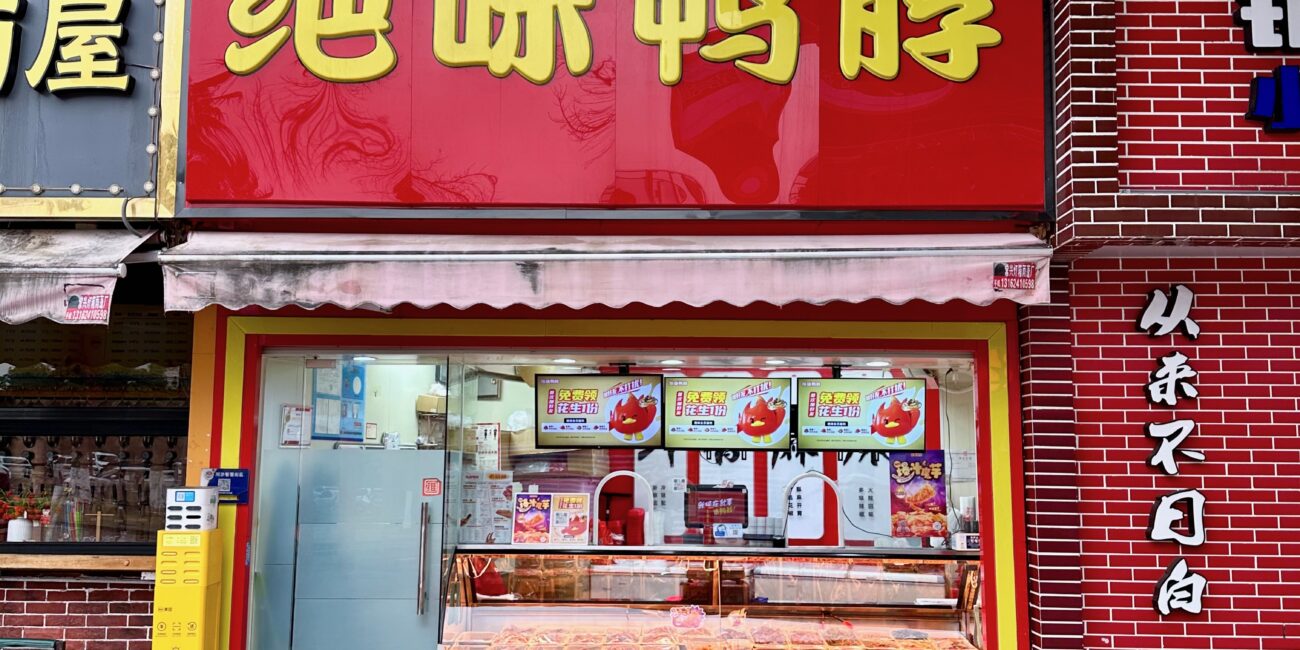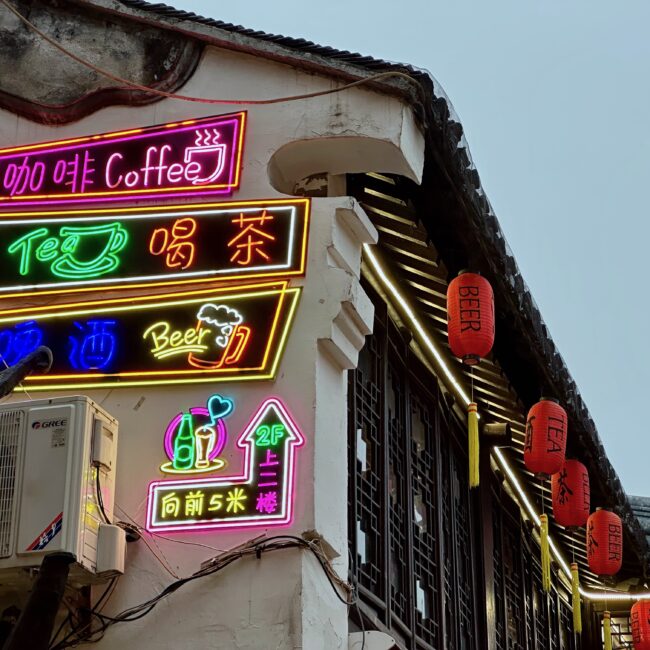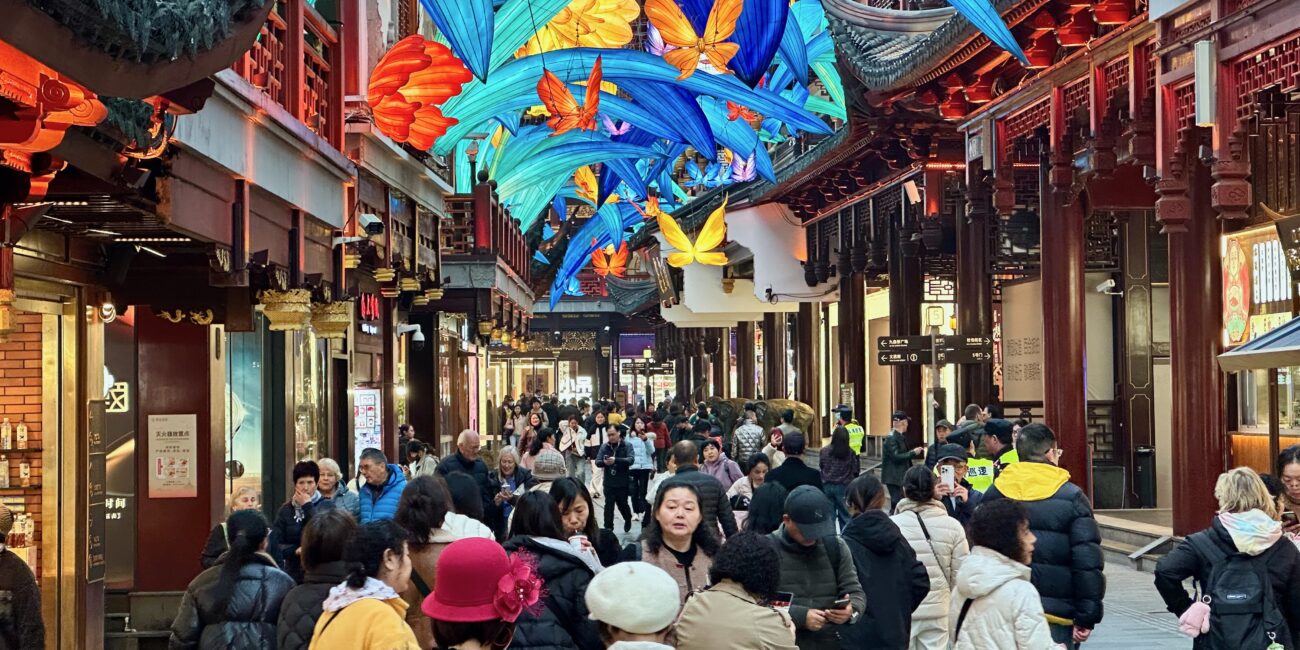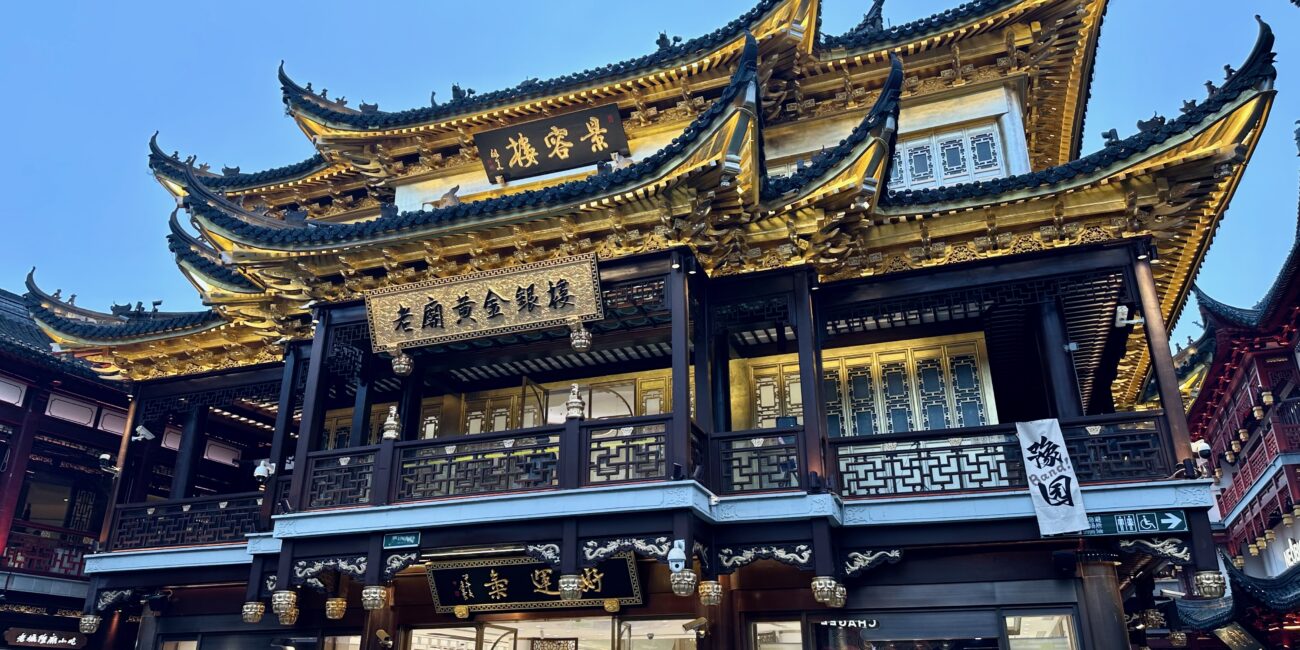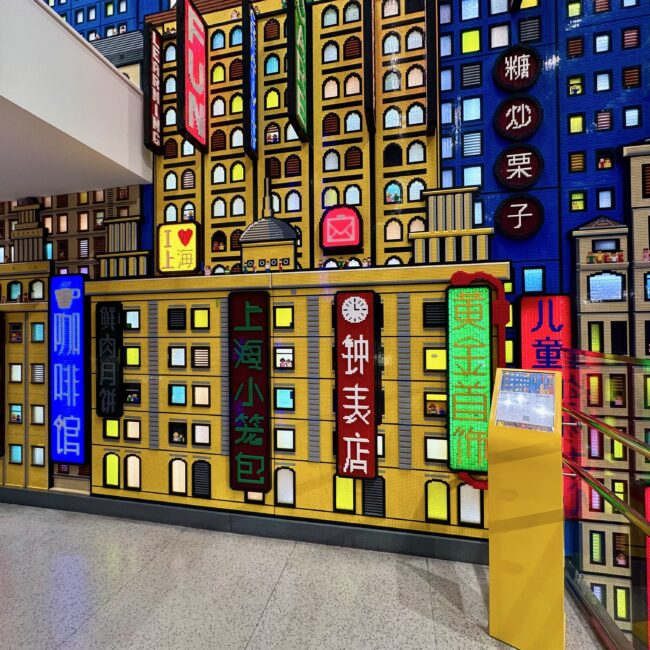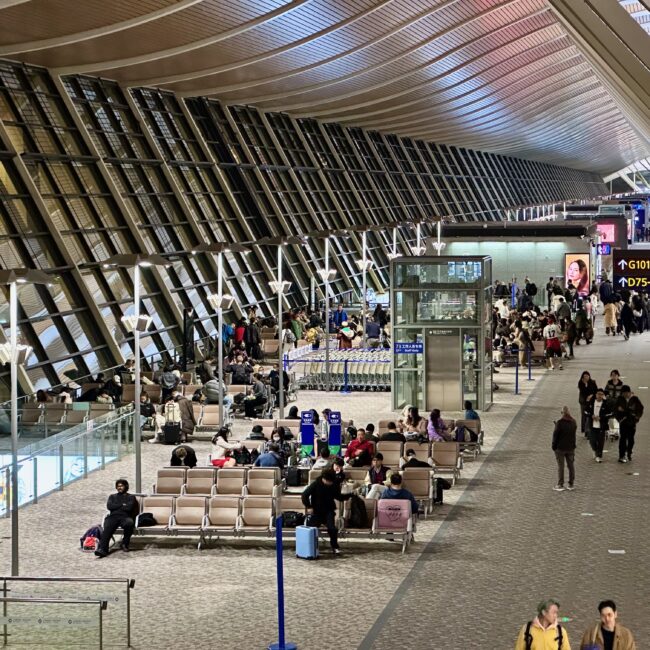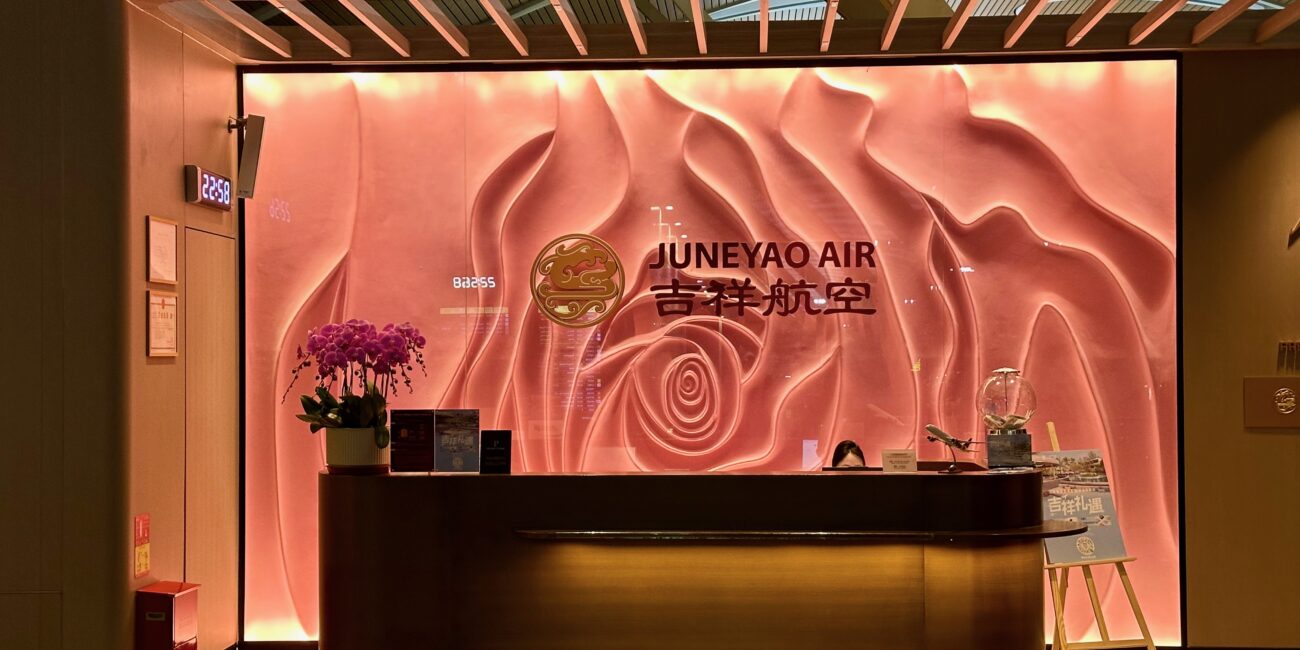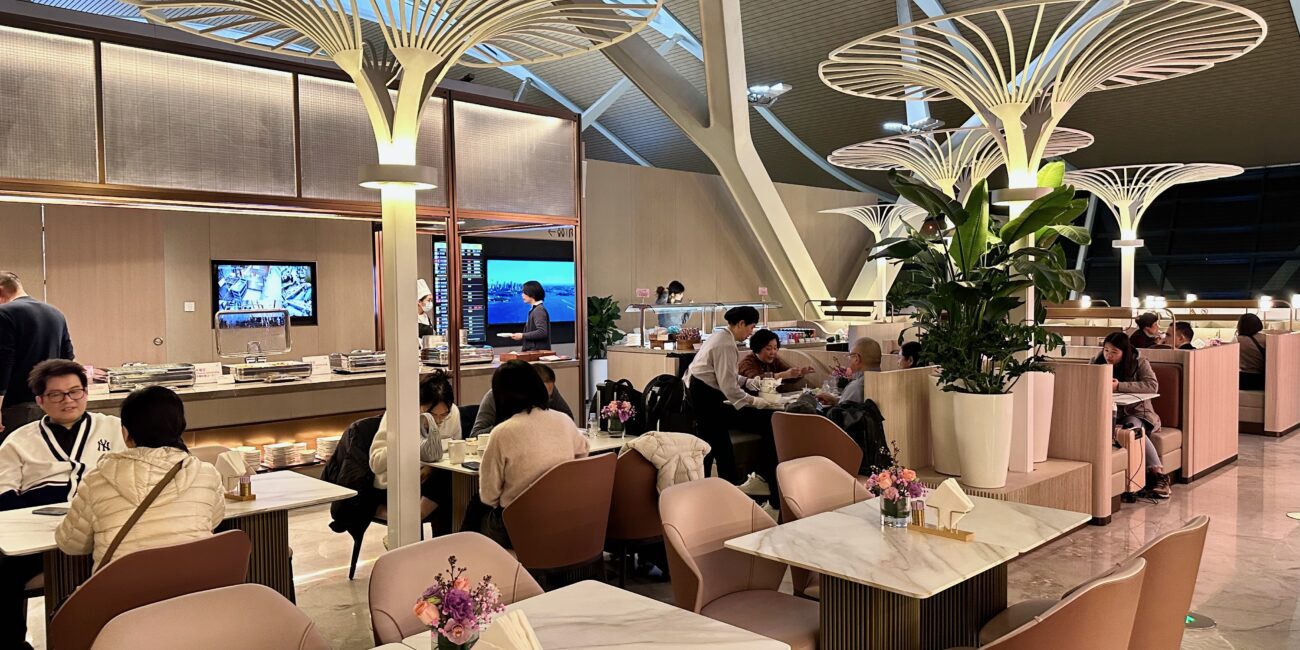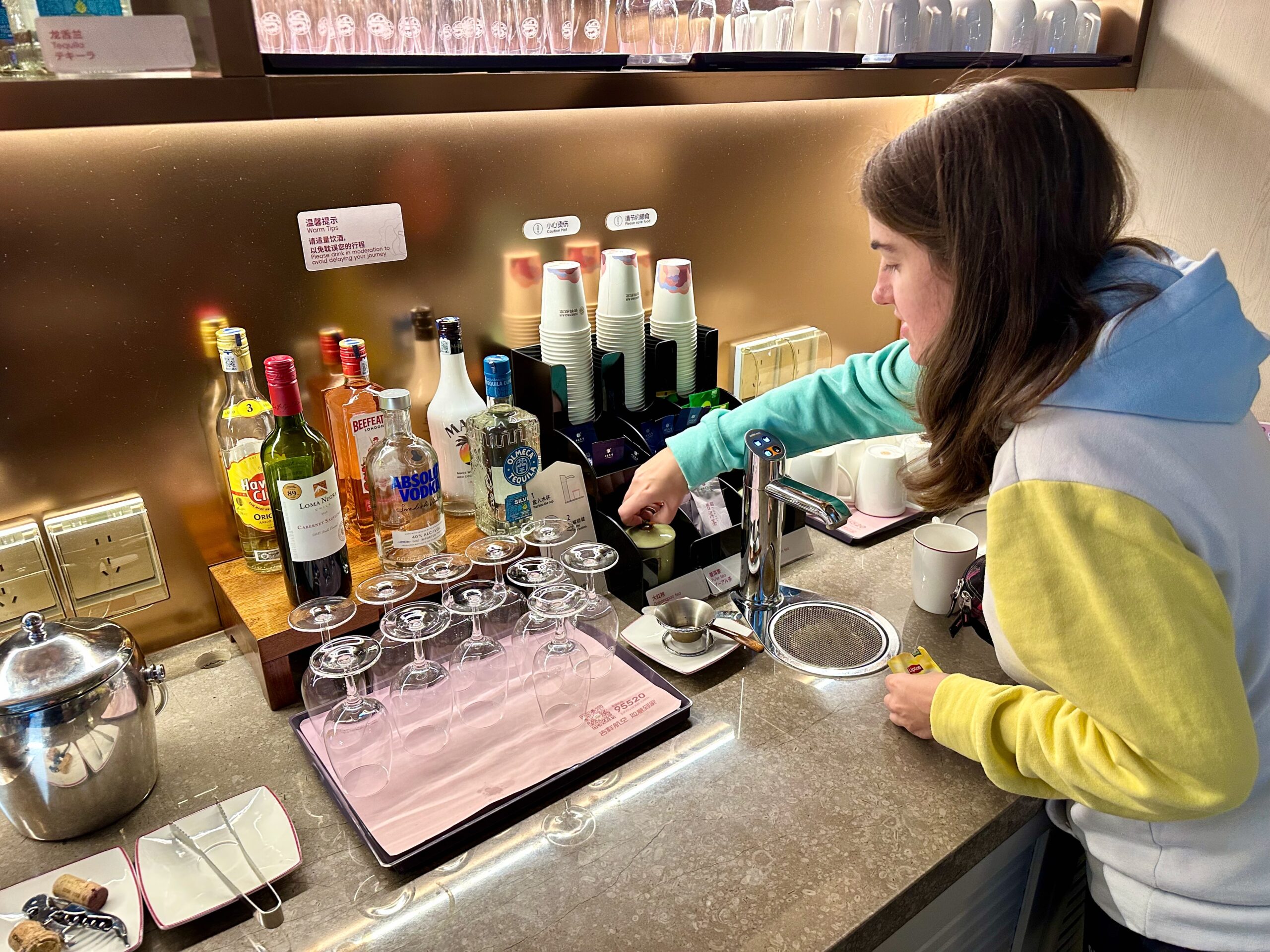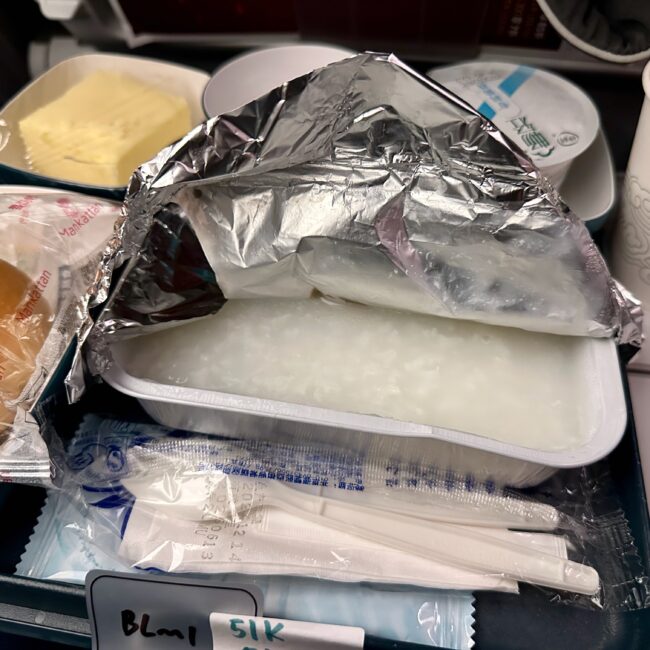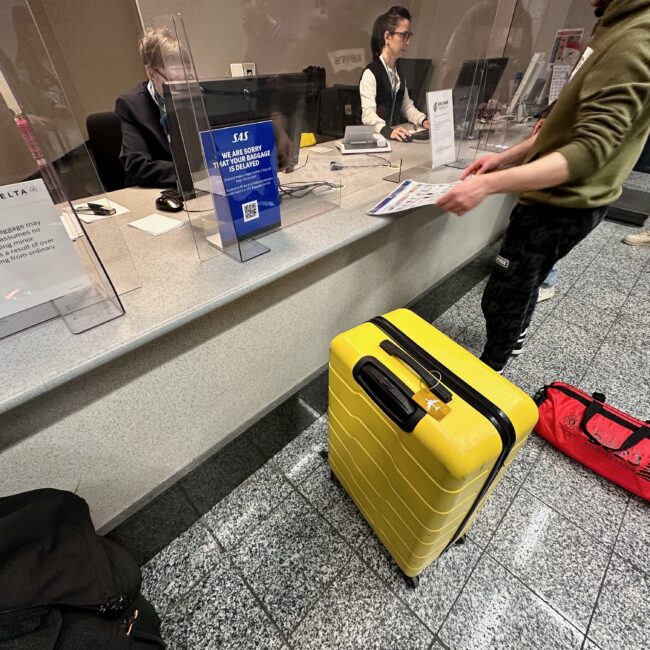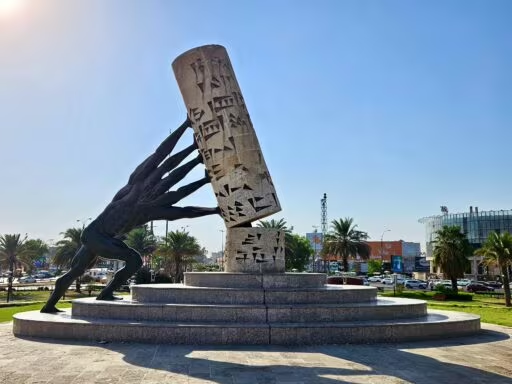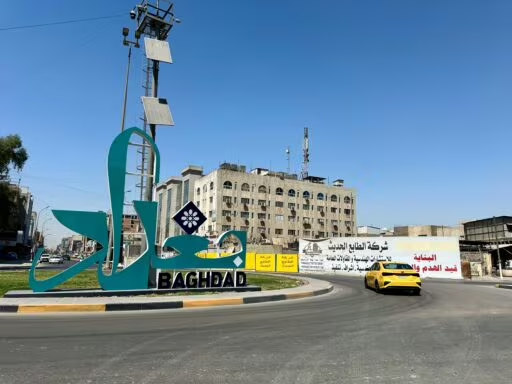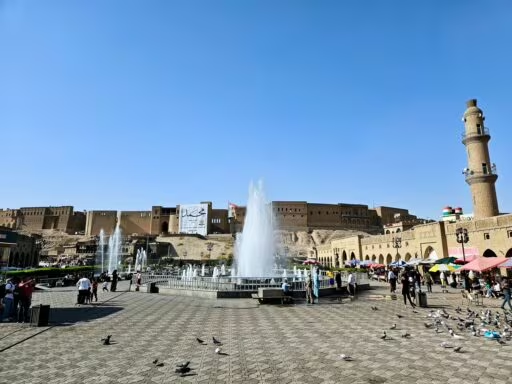This post is also available in:
Polski
Hello! 👋
While planning our trip to Thailand, we booked our flights in a way that let us squeeze in a bit of extra exploring. On the way there, we had a short stop in Chengdu, and on the way back – we managed to fit in a one-day layover in Shanghai. Since we were flying with Air China anyway, we thought… why not check out another Chinese city?
We were curious to see if Shanghai would be just as dynamic as Chengdu, or maybe completely different. But, as usual with our layovers – gloomy weather again. Vietnam → Turkey → Poland? Rainy in Istanbul. Now China? You guessed it – grey and foggy! 😅 At this point, we might be cursed when it comes to stopover weather.
Where is Shanghai located?
Shanghai is located in eastern China, right where the Yangtze River meets the East China Sea. It’s a massive, modern city and one of the country’s most important economic hubs. To put it simply – if you’re looking at a map, Shanghai sits more or less directly across from Taiwan, just on the mainland side.
The city is divided into two main parts, among others:
- 👉 Puxi – the more traditional side, with colonial architecture and the famous Bund promenade.
- 👉 Pudong – the modern side, full of futuristic skyscrapers like the Shanghai Tower and the Oriental Pearl Tower.
Shanghai’s location makes it a perfect spot for a short stopover – many flights from Europe to Asia connect here. And it’s a great chance to catch a first glimpse of China, even if it’s just for a day.
Departing Thailand for China
Our Thailand adventure officially came to an end – we spent nearly a month there, which felt like the perfect amount of time for us. Half of it was on Phuket, the other half in Chiang Mai. It was also a great chance to see what post-pandemic Thailand is really like nowadays.
I had actually been to Phuket before, back in 2021 during the Phuket Sandbox program – when everything was still very much in pandemic mode. A year later, in 2022, I visited Chiang Mai. This time, we finally got to return together and see how things have changed since then.
If you want to read our latest posts, click below:
- 👉 Phuket
- 👉 Chiang Mai
Chiang Mai – Bangkok Suvarnabhumi
Even before booking our tickets, we spent a lot of time figuring out how to get back from Thailand to Europe without spending a fortune. Unfortunately, trying to get a return ticket from Chiang Mai on a single booking came with some truly outrageous prices. In the end, we settled on flying back from Bangkok with Air China, and booked a separate domestic flight from Chiang Mai to Bangkok with THAI Airways.
How was the local flight with the national carrier? Honestly… not great. The plane was cramped, and there was this weird smell in the cabin that was hard to ignore. No joke – we’ve had more legroom on Wizz Air, and that’s saying something. The seats were fine comfort-wise, but if your knees keep bumping into the seat in front of you, it’s not exactly a relaxing ride. Luckily, it was only an hour-long flight, so it was bearable.
We left our luggage at the airport – and here’s a little tip: there are two places where you can store your bags. One is the “official” luggage storage operated by the airport, located at the arrivals level, and it costs around 30 PLN per item. But if you walk a bit further (just head down the escalator to the metro level), you’ll find another spot where you can leave your bags for about half the price.
We dropped off our stuff, headed into the city to grab something to eat, did a bit of light shopping, and then made our way back to the airport. Quick repack, quick change of clothes – and then it was just a matter of waiting.
Outbound from Thailand
Our flight to Shanghai was showing a one-hour delay in the system – but in reality, it was only about 20 minutes late. And on the bright side, we managed to score two lounge passes. We figured there was no point using them in Bangkok – better to save that little bit of comfort for our long stopover in Shanghai, especially since our next flight to Milan wasn’t until around 2 AM.
Flying by plane
The flight to China went pretty smoothly, but we were completely exhausted. We tried to catch some sleep on the plane, but you know how that goes – you close your eyes, but keep waking up, tossing and turning, and in the end, it’s not really sleep… more like a prolonged blinking session.
At some point, they served us a meal – we honestly weren’t sure if it was supposed to be dinner, breakfast, or just a “midnight snack situation”, but… it was edible. We had pre-selected lactose-free and low-calorie meals, so nothing fancy, but it wasn’t terrible either. Everything looked fairly normal, and taste-wise it was actually decent – by airline standards, at least.
Passport check-in in Shanghai
Shanghai’s airport is no joke – compared to Warsaw’s Chopin Airport, it’s an absolute beast. Everything is bigger, more spread out, and honestly a bit overwhelming, especially when you’re running on zero sleep after a night flight.
On the way to passport control, we came across these self-service fingerprint stations – which in theory sounded like a cool idea, but in practice… not so much. Out of maybe ten machines, only three actually worked. And even those were hit or miss – sometimes they took your fingerprints, sometimes they didn’t, no clear instructions anywhere. In the end, we just skipped it altogether, since the officers at passport control asked for fingerprints anyway. So the whole “do it yourself” thing turned out to be totally unnecessary.
Oh, and one more thing – after landing, you still have to fill out a paper arrival form. Yep, an actual piece of paper. In 2025. 😉
Accommodation
And now we get to the real gem of this whole story – booking a hotel through Air China. On paper, it sounds great: free accommodation as part of your stopover. In practice? A clunky mess straight out of the early 2000s.
In Chengdu, we didn’t manage to use the stopover hotel at all – and honestly, that was probably for the best. The hotel was way out of town and would’ve just made sightseeing a headache. But in Shanghai, we decided to give it another shot. Calling didn’t work, so we went through the whole thing ourselves online. Of course, the form refused to accept two travelers, so I had to just put in my own name. You don’t get to pick your hotel – the system assigns one at random. And the confirmation? It comes by SMS. If you lose it… good luck, because there’s no way to retrieve it later.
The whole booking process with Air China was a mess. No comparison to airlines like Turkish or Qatar Airways – with them, everything runs smoothly. This? Felt like someone built the website back in the ’90s and never updated it.
Theory vs. Reality
We got the hotel address. Google Maps – shows it. Apple Maps – nope, nothing. Hmm, okay. We checked which metro stop to get off at, walked to the location… and guess what? No hotel in sight. XD
Luckily, we randomly bumped into someone who tried to help us out. English basically doesn’t exist in China, so DeepL and Google Translate came to the rescue. Turns out the hotel pin on the map was completely wrong – someone had just dropped it in a random spot. The actual hotel was about 1.5 km away. Exhausted and not in the mood for more surprises, we ordered a DiDi and rode the rest of the way.
And yep – the hotel actually existed. Although the name on the building was completely different, and the “correct” name was written on a tiny little sign inside… but hey, close enough. We made it!
The room itself? Well… let’s just say it was a disaster. The window didn’t seal properly, and it was freezing inside. The AC had a heating mode, but of course, it didn’t work. We ended up sleeping (or more like napping for a few hours) fully clothed, wrapped in thick blankets, and we were still cold. As for the staff – the lady at reception knew exactly one word in English: “hello.” That was the extent of the conversation.
The one upside to this whole situation was the airport transfer from the hotel. Other than that – a sketchy 3-star experience at best, just enough to survive the night. Overall? Wouldn’t recommend it, but hey… it was one of those “good to experience once” kind of adventures.
Visas and documents
When you’re transiting through other countries, it’s always smart to check in advance if you need a visa or if there are any weird transit rules. Otherwise, instead of casually strolling to your next flight, you might end up buried in paperwork and unnecessary stress.
Thankfully, this time everything was pretty straightforward. In 2024 and 2025, Polish citizens (and a few other nationalities) can enter China visa-free for up to 15 days – as long as it’s for tourism, business, or transit. So for a one-day stopover in Shanghai, it worked out perfectly.
If you’re planning to stay in China for longer than the visa-free period, then yep – you’ll need to sort out a visa in advance. There’s no online shortcut either; you’ve got to go in person to a visa center or embassy to get it done.
Traffic conditions
If you’re thinking about renting a car in China – just a heads-up: it’s not that simple. International driver’s licenses aren’t recognized there, so if you want to drive legally, you’ll need an actual Chinese driver’s license.
We didn’t even consider renting a car – for a one-day stopover it just doesn’t make sense, especially when the metro covers everything you need. But it’s good to know that, at least in theory, Chinese traffic laws strongly protect pedestrians and cyclists. In practice though, we’ve read that drivers often don’t yield – even at crosswalks or when the light is green. Luckily, we didn’t run into any of that. Everywhere we walked, drivers actually stopped and let us cross without any issues.
Out on the streets? It’s busy, for sure – but surprisingly well-organized. And pedestrians and bikes are literally everywhere – especially scooters. They pop out of nowhere, so you really need to keep your head on a swivel, especially at crosswalks and in smaller side streets.
DiDi
As we mentioned during our stopover in Chengdu – getting around China by car on your own is pretty much a no-go, so you’re left with local transport options. And once again, DiDi comes to the rescue – China’s version of Uber.
We used the app in Shanghai too – no surprises there, it worked perfectly. Just like before, we used it through Alipay. No need to mess around with extra installs, settings, or any complicated steps – you type in the address, order the ride, and the payment goes through automatically. All from one app, in English, with no need for a local SIM card or a Chinese bank account.
Public transport in Shanghai
Getting around Shanghai is super easy with public transport – especially the metro, which is incredibly well-developed. It’s actually one of the largest metro networks in the world, with 20 lines and hundreds of stations, so you can pretty much get anywhere you need to go.
In theory, we could’ve tested out the famous Maglev – the magnetic levitation train that flies from Pudong Airport to the city center at speeds of up to 250 km/h. But in practice, it just didn’t work out. The time of day and where our hotel was located made it more hassle than it was worth.
The city is way bigger than Chengdu, so taking DiDi everywhere didn’t really make sense. Plus, the travel times would’ve been pretty much the same as with the metro – so we stuck with public transport, and honestly, it was the right call.
You can buy tickets from machines (they have an English option), or just use Alipay or WeChat Pay. Stations are clearly marked, the trains are clean, and they run on time.
Bus communication
We didn’t end up using the buses in Shanghai ourselves, although Apple Maps did suggest them a few times as a decent option. And honestly – no surprise there. The city has a massive bus network that covers both the downtown area and the more far-out neighborhoods.
If you’re planning a longer stay, know some Chinese, or just enjoy a bit of a challenge, buses can actually be a solid alternative – especially for getting to places that aren’t easily reachable by metro.
SIM card
Internet in China is definitely something you want to sort out in advance – especially if you plan on navigating the city, using a translator, or ordering DiDi rides. We’d used an eSIM from T-SIM.HK before and were happy with it, but this time we tried something new – we bought an eSIM directly through Alipay. It turned out even cheaper, and the whole process took maybe two minutes. We paid just a few bucks for a couple of gigabytes – probably around 6 PLN, definitely less than our previous 3 GB for 18 PLN deal.
China’s Great Firewall
And here we are again, back to a true classic – the Great Firewall of China. It’s definitely something you should sort out before you even think about landing in the country. Seriously, it’s not a myth. If you don’t come prepared, you might suddenly find yourself in the middle of Shanghai without access to Google Maps, Facebook, or even a properly working translator.
This wasn’t our first rodeo with the Great Firewall – we already dealt with it during our Chengdu stopover, so this time we came prepared. The key thing to remember: you need to have your VPN installed before you land in China. Once you’re on the ground, it might be too late – even app stores can stop working properly.
Navigation access
This is where the classic Chinese game of “guess which app will actually work” begins. Google Maps? Forget it – it won’t even load. Our main tool was Apple Maps. It worked pretty well and even let us search for public transport routes – but only while physically in China.
If you really want detailed info on walking routes, public transport, or street layouts, Baidu Maps is your best bet. The catch? It’s entirely in Chinese – not a single word of English.
There’s also Amap (Gaode Maps) – another local alternative to Baidu. It’s just as accurate, and also completely in Chinese. That said, some travelers say it’s slightly more user-friendly when it comes to navigating the interface.
For those who want something simpler and not so local, Maps.me is worth considering – it works offline, so you don’t need internet access. It’s not always perfectly accurate, but it can be a handy backup when other apps fail.
Food
This time, there was no culinary adventure – we went for simple and safe options. On one hand, it’s a shame we didn’t get to try some proper local food, but on the other… time and exhaustion definitely won that battle.
For a late breakfast, we went with a classic – McDonald’s. And honestly? It was cheaper than in Poland. Two breakfast sets cost us around 33 PLN. Familiar vibes, no surprises, and just the right fuel for wandering around the city afterward.
For lunch, we stepped it up a bit and went to Shake Shack. Burgers were just what you’d expect – tasty, familiar, and not crazy expensive. Honestly, we were kind of surprised that fast food in China isn’t as pricey as you might think.
Coffee? That’s a different story. Starbucks came with premium-level prices. Sure, it tastes the same as anywhere else, but when you’re paying, you really start questioning whether you actually needed that coffee. 😉
We also came across some random street food along the way – nothing fancy, just a quick snack, and of course we paid with Alipay. That was probably the only truly “local” food moment we had during the day.
Do we regret not trying any proper Chinese food? Yeah, a little. But between the hotel mess, figuring out transportation, being exhausted, and racing against the clock – the “familiar and fast” option won. Let’s be real, no one explores the world well on an empty stomach.
Exchange office or ATM?
When you’re traveling anywhere, you usually end up wondering whether it’s better to exchange cash beforehand or just hit up an ATM on arrival. But in China, things work a bit differently. Cash is slowly fading out, and mobile payments have completely taken over everyday transactions.
Apps like Alipay and WeChat Pay are king – they let you pay for just about anything using QR codes. From shopping in stores to buying metro tickets, all it takes is a quick scan and tap. The best part? Both apps now let international users add foreign credit cards like Visa or MasterCard, which makes using them during short visits way easier.
ATMs are available in bigger cities, but not all of them accept foreign cards. You’ll need to look for machines with the Visa or MasterCard logo to have any luck.
Climate and weather conditions
In our case, Shanghai greeted us in true classic China style – low-hanging clouds, drizzle, chilly air, and an overall gray vibe. That was the welcome package for March 2025. It wasn’t the worst weather in the world, but definitely far from the sunny, vibrant image you picture when planning an adventure in Asia.
But generally speaking, Shanghai has a subtropical climate – so you get all four seasons, just with a bit of a twist. Summers? Hot, humid, and not for the faint-hearted. The air feels heavy, temps regularly shoot past 30°C, and sudden downpours or storms can roll in out of nowhere. Peak summer, especially July and August, can be a tough time for sightseeing – you’ll be sweating buckets before you even make it to your first stop.
Winter, on the other hand, tends to be chilly but not exactly freezing – it rarely drops below zero, but the high humidity makes it feel colder than it actually is. Snow? Technically possible, but super rare. It’s usually overcast, kind of grey, and sometimes windy – not exactly the kind of weather that makes you want to go on long scenic walks.
Spring and autumn are supposedly the best times to visit. April and May, then September and October, bring mild temperatures, less rain, and a bit more sunshine. That’s when the city really comes to life – perfect for strolling through the streets, exploring parks, or taking in the skyline from Pudong. Too bad we landed right in the middle of that gray, in-between phase… but hey, can’t win ‘em all. 😄
Safety
When it comes to safety, Shanghai left a really good impression on us. Not once did we feel uncomfortable or unsafe – whether it was on the metro, walking down the street, or even later in the evening. The city feels well-organized and calm, and people mostly just go about their business rather than paying much attention to tourists.
One thing that really stands out – the security checks. Seriously, they’re everywhere. Want to take the metro? First, your bag goes through the scanner. Backpack, tote, whatever you’re carrying – it all has to be scanned. It gets a bit tiring, especially if you’re lugging a lot of stuff and have to keep taking things on and off. But hey, that seems to be the standard in China. It’s the same at the airport – though there, at least, you kind of expect it.
That said, the checks are handled pretty efficiently – no one stops you without reason, and no one gives you a hard time. They scan your stuff, wave you through, and that’s it. It feels more like a precaution than anything else, not some intense search for trouble.
Did we see anything sketchy or feel uneasy at any point? Not at all. It was calm, clean, and predictable – which, when you’re traveling, is honestly a huge plus. You can just focus on exploring instead of constantly watching your back or worrying about someone eyeing your phone.
Places we were able to see in Shanghai
We didn’t have much time for sightseeing. After landing, we crashed hard and didn’t wake up until around 1 PM. And with the weather being what it was – foggy, damp, and gray – we weren’t exactly in adventure mode. So yeah, no pretending here that we checked off every must-see spot. We just went for a little walk and saw what we could, within the limits of our energy, time, and visibility.
We started with the Oriental Pearl Tower – it might be an iconic building, but with all that fog, going up wasn’t really worth it. We could barely see it from the ground, let alone imagine any kind of view from the top. Other skyscrapers like Jin Mao Tower and Shanghai Tower were playing peekaboo too – visible one second, completely swallowed by clouds the next. Classic Shanghai skyline, just in its default foggy mode.
After that slightly underwhelming skyline experience, we headed over to Yuyuan Old Street – and things got a bit more interesting. It’s definitely a touristy spot, but not in the “packed with Europeans and selfie sticks” kind of way. Most of the tourists were other Asians. There was even a funny moment when a Chinese lady asked Jadzia for a photo together – no shared language, but plenty of enthusiasm. 😂
We wrapped things up with a quick ride over to the area around People’s Park to check out a bit of the city center. And that’s when it really hit us – Shanghai is massive. Wide streets, towering buildings, and everything just on a whole other scale. It became clear that this city has a lot to offer… you just need more than a few hours and better weather than “fog with a chance of drizzle” to really enjoy it.
Summary
How to put it… Shanghai definitely left us wanting more. Partly because of the weather, partly because we didn’t have much time – but we both felt like we’d love to come back. Preferably when the skies are a bit clearer, because seeing the city through a gray fog filter wasn’t exactly what we had imagined.
Even though we only saw a small slice of the city, we already know our “want to see next time” list is way longer. And somewhere in the back of our minds, there’s this wild idea: a motorcycle trip to China. Sounds impossible, right? Between the paperwork, the licenses, and all the logistics, it’s definitely next-level complicated – but hey, who knows? Maybe one day.
Not being able to drive on your own in China is definitely a limitation. For short stopovers like this, it’s not a huge deal, but if you’re planning a longer stay, it forces you to get creative – whether that means relying on public transport or booking organized tours.
What really surprised us was how few Europeans we saw. In a lot of places, we definitely felt like a bit of a novelty – like, “Oh look, foreigners!” Not quite on the level of Cairo, where locals actually stare because most tourists stick to Hurghada, but still – Shanghai isn’t like Bangkok or Dubai, where every other person on the street is a tourist from Europe.
Return to Poland
And finally – the journey home. And let’s be honest: we’re probably not going to do this kind of flight-and-timing jigsaw ever again. It was all way too drawn out, exhausting, and honestly just not enjoyable.
First, we had a flight from Shanghai to Milan Malpensa. Then a connection with Wizz Air from Bergamo to Warsaw. Sounds manageable on paper, but in reality? It was rough. The departure experience at Shanghai’s airport was a nightmare – the security check felt like no one had ever considered passenger flow or capacity. Too little space, long lines, and an intense screening of every backpack, bottle, cable – you name it. Not saying being thorough is a bad thing, but the whole setup was just super poorly organized.
After security, we headed to the Juneyao Air lounge since we had access through our card. It was decent overall, but unfortunately – even though there were lounge chairs available, we weren’t allowed to lie down because we weren’t flying with their airline. A shame, really, because with a 2 AM flight, even a short nap would’ve been pure gold.
The flight itself? A culinary disaster. We both got some bland, flavorless rice mush. Sure, it was marked as lactose-free, but come on – you can make something dietary and edible. Breakfast wasn’t any better. Honestly, we would’ve been better off skipping the meals altogether.
We landed at Malpensa and then had to make our way to Bergamo for the next flight. And here’s where the next issue kicked in – Milan has three airports (Malpensa, Linate, and Bergamo), and each one is in a completely different part of the region. Getting from Malpensa to Bergamo isn’t just a quick hop – it’s an hour on a packed, stuffy bus to Milano Centrale, followed by another hour to actually reach Bergamo. All that with full luggage and zero energy left. Fun times. 😉
And to top it all off – Jadzia’s suitcase arrived in Warsaw damaged. So of course, we had to deal with the whole claims process and fill out all the paperwork for compensation. Just the cherry on top of an already exhausting journey.

